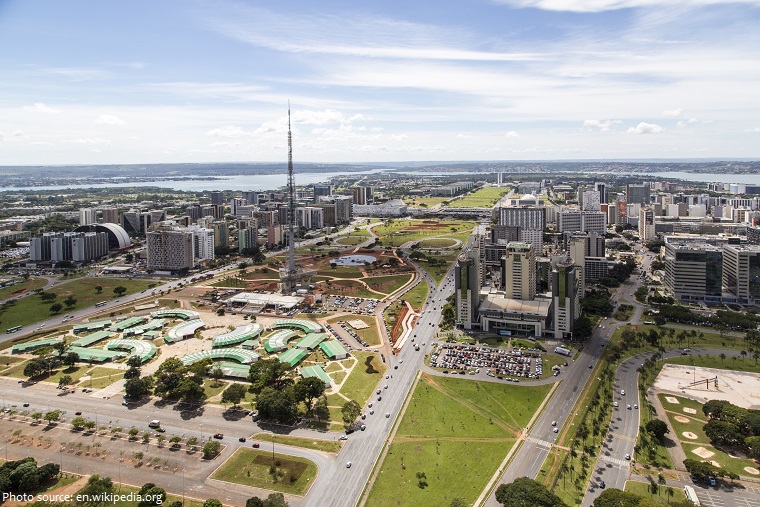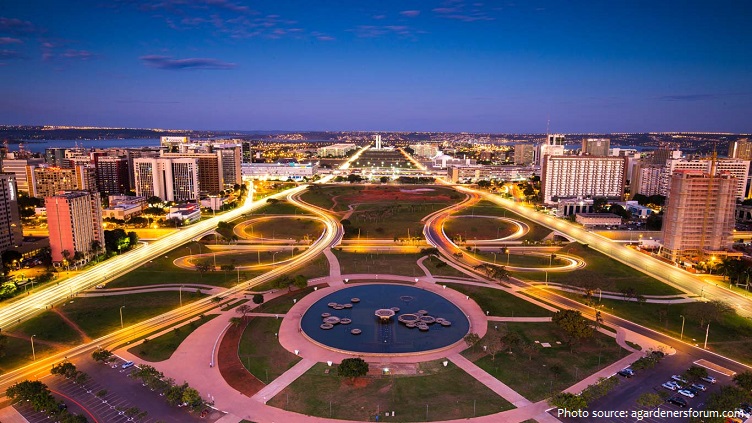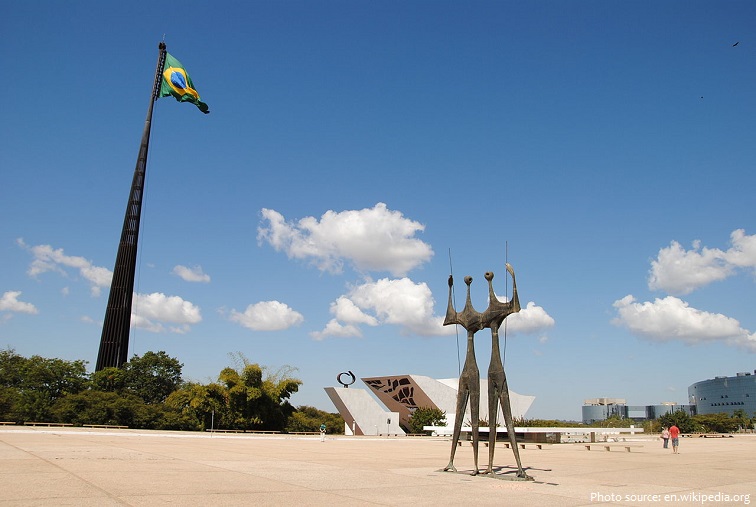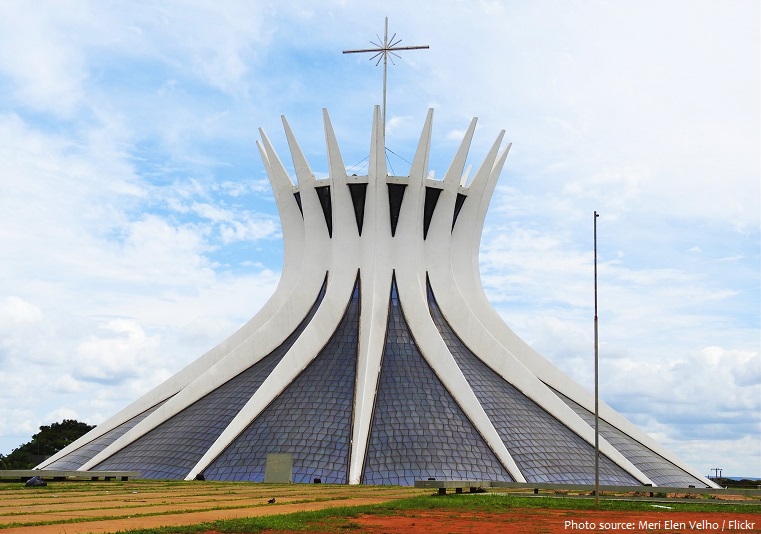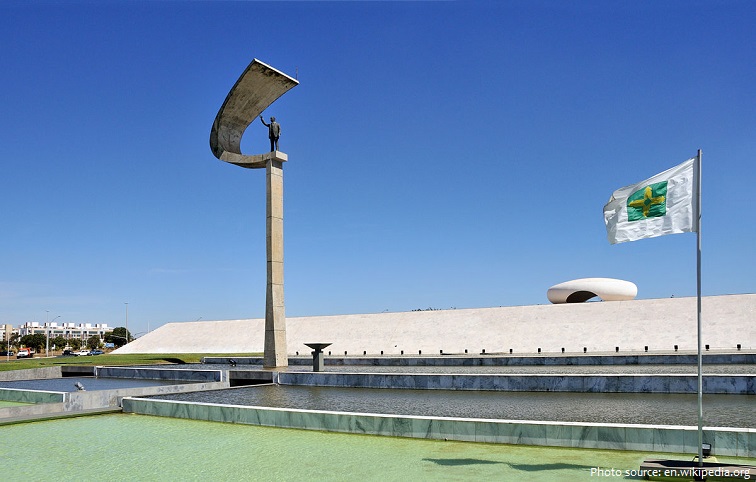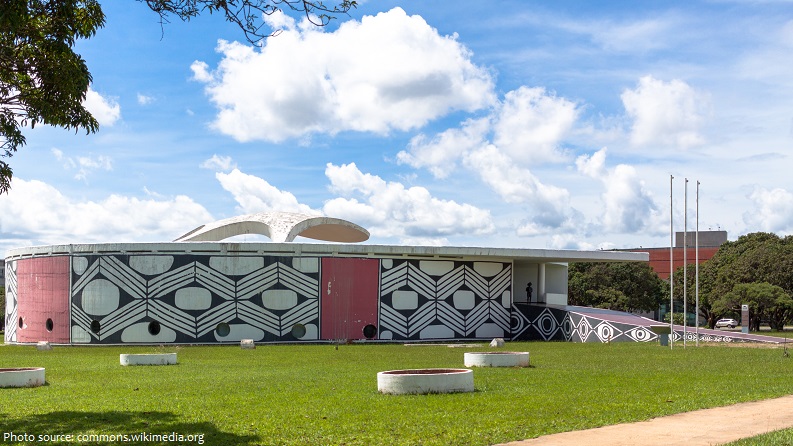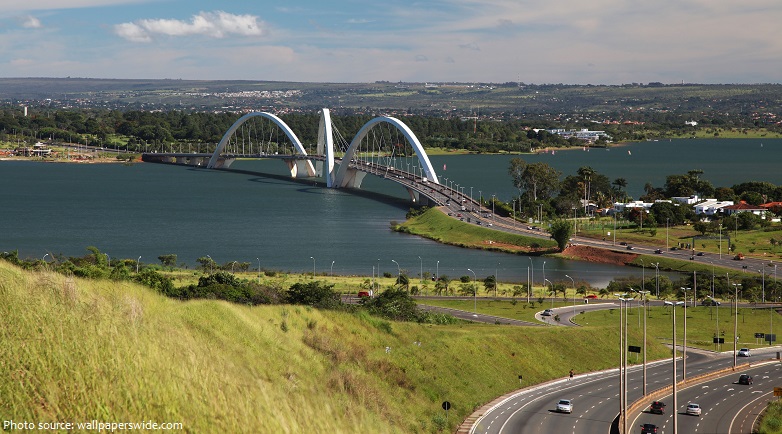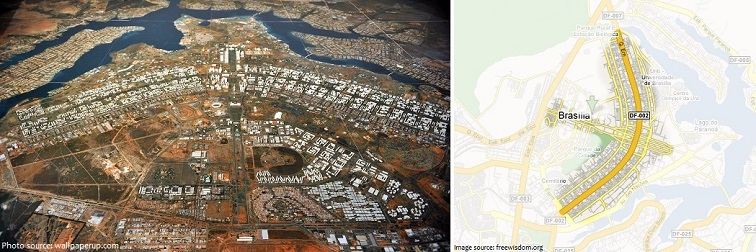Brasília is the capital city of Brazil.
The city is located at the top of the Brazilian highlands in the country’s center-western region.
As of May 2019, the population of Brasília is about 3 million people. It is the 3rd most populous city in Brazil.
The city covers a total area of 5,802 square kilometers (2,240 square miles).
Brasília lies at an elevation of 1,172 meters (3,845 feet) above sea level.
The city was planned and developed by Lúcio Costa, Oscar Niemeyer and Joaquim Cardozo in 1956 to move the capital from Rio de Janeiro to a more central location.
Then, amazingly, Brasília was constructed in just 41 months, from 1956 to April 21, 1960, when it was officially inaugurated.
Because Brasília was planned and constructed as a whole piece, it doesn’t have the mix of commercial, residential, and government functions that happens when a city grows over time; instead these uses are strictly divided.
Brasília was chosen as a UNESCO World Heritage Site due to its modernist architecture and uniquely artistic urban planning.
It has also been named “City of Design” by UNESCO in October 2017 and has been part of the Creative Cities Network since then.
The Monumental Axis is a central avenue in Brasília’s city design. A common urban legend persists that the Monumental Axis is the widest road in the world, where “[100 to 160] cars can drive side by side”. This is untrue, as the road consists of two avenues with six lanes on either side; a total of twelve lanes. However, the street has been featured in the Guinness Book of Records as having the widest central reservation of a dual carriageway in the world.
Praça dos Três Poderes is a plaza in Brasília. The name is derived from the presence of the three governmental powers around the plaza: the Executive, represented by the Palácio do Planalto (presidential office); the Legislative represented by the Congresso Nacional (National Congress); and the Judiciary, represented by the Supremo Tribunal Federal (Supreme Federal Court).
The Cathedral of Brasília is the Roman Catholic cathedral serving Brasília, Brazil, and serves as the seat of the Archdiocese of Brasília. It was designed by Brazilian architect Oscar Niemeyer and projected by Brazilian structural engineer Joaquim Cardozo, and was completed and dedicated on May 31, 1970. The cathedral is a hyperboloid structure constructed from 16 concrete columns, weighing 90 tons each.
The JK Memorial is a presidential memorial and museum dedicated to Juscelino Kubitschek (1902–1976), the 21st President of Brazil and the founder of Brasília, capital city of Brazil since 1960. Designed by Oscar Niemeyer, the memorial is located in the Monumental Axis in Brasília. It is the final resting place of President Kubitschek.
Memorial dos Povos Indígenas (Museum of Indigenous People) is a museum in Brasília. Its outstanding collection of native Brazilian art and artifacts not only records pre-colonial native culture but celebrates the living traditions of Brazil’s indigenous peoples today. Historical and present-day implements – pottery, baskets, weapons, paddles, and feather headdresses – join art works created especially for the museum in a collection considered one of the best in South America. In designing the unusual round building patterned after a traditional Yąnomamö round house, Oscar Niemeyer consulted with Yąnomamö shamans and elders for authenticity.
Juscelino Kubitschek Bridge is a steel and concrete arch bridge across Lake Paranoá in Brasília, Brazil. It connects the eastern shore of the lake – where Lago Sul, Paranoá and Brasília International Airport are located – to Brasília’s city center, via the Monumental Axis. Opened to traffic on December 15, 2002, its distinctive silhouette quickly became a Brasília landmark.
Brasilia looks like an airplane from above.
Brasília is the most populous Portuguese-speaking capital city.
As a venue for political events, music performances and movie festivals, Brasília is a cosmopolitan city, with around 124 embassies, a wide range of restaurants and complete infrastructure ready to host any kind of event.
Among major Latin American cities, Brasília has the highest GDP per capita.
Brasília has a tropical savanna climate, with two distinct seasons: the rainy season, from October to April, and a dry season, from May to September.
